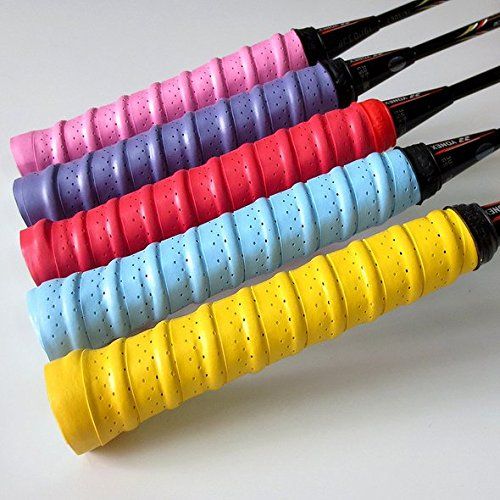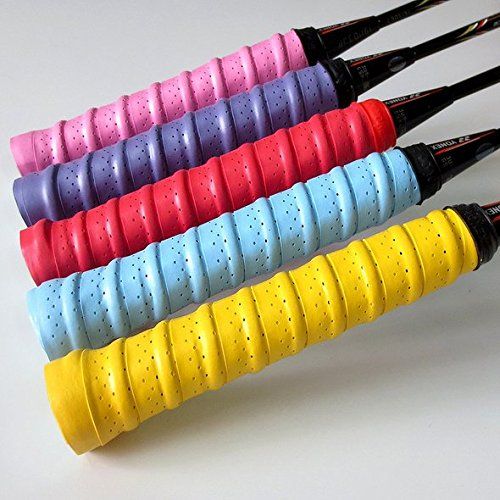If you suffer from dry hands, you know how frustrating it can be to find a grip that works for you. Badminton is a game that requires a good grip, so dry hands can be a real problem. There are a few things you can do to help improve your grip. First, make sure you’re using a racket that is the right size for you. A too-big racket can make it difficult to grip the handle. Second, try a synthetic grip. These grips are designed to absorb sweat and help keep your hands dry. Third, use chalk. Chalk can help absorb moisture and keep your grip dry. fourth, try a different grip.
There are a few things to consider when choosing a badminton grip for dry hands. The first is the size of the grip. The second is the material. And the third is the amount of grip.
When it comes to size, there are two things to keep in mind: the circumference of the grip and the length of the grip. The circumference should be just big enough so that your hand can comfortably wrap around it. The length should be such that there is about an inch of space between your palm and the Racquet end.
As for material, rubber grips are more suitable for dry hands.
The Importance of a Good Grip:
Badminton is a sport that can be enjoyed by people of all ages and skill levels. One of the most important aspects of playing badminton is having the proper grip on your racket. If your hands are too dry, it can be difficult to keep a good grip on your racket. This can lead to inconsistent strokes and a loss in quality of play.If you’re a beginner, it’s crucial to get the right grip on your racket.
You should always stretch out your fingers when gripping it: if you pinch them, they will get tired very quickly and the hand won’t be able to do its job properly. To make sure that you have enough space between your fingers, wrap a piece of sponge (or other small object) around the handlebar when using this grip.If you’re using this grip, keep in mind that it isn’t necessary to have all four fingers curled at 90 degrees (in order to prevent slipping). It is always possible to perform multiple strokes without re-coring — I know this because I do it myself!
The air flow will come through the racket as long as there isn’t too much pressure exerted on either hand; so if there is too much pressure on one hand (which will happen frequently) then some of that pressure will go through the racket — which means that maybe you should consider changing from left-hand grip and switch back to “right-hand grip.”
These last few tips are especially important for beginners who don’t yet have enough experience with their own racket.
Types of Grips

Badminton grips come in many different varieties, each of them meant to be used in different ways. You can choose between rubber, synthetic and wooden grips. Different styles of badminton grip offer varying levels of grip strength. A good grip will provide a level of protection for your hand from the racket as well as a high level of comfort. It is important that you get a grip that fits your hand perfectly, so that you can keep your racket straight, allowing you to play with intensity and focus. If you are not sure about your badminton grip, it may be worth taking some time out to visit an experienced badminton player from your local golf course or community center; they will be more than happy to show you the different types of grips that are available and let you know what kind of comfort they provide.
Dry Hands and Badminton
A good badminton grip can make the difference between a good game and a great one. If the skin on your hands is too dry, you will have a hard time keeping your racket gripped so that you can perform well. This isn’t just something you should fix yourself; it’s something you should avoid at all costs.How to Get a Good Grip on Your Racket. Badminton is a sport that can be enjoyed by people of all ages and skill levels. One of the most important aspects of playing badminton is having the proper grip on your racket. If your hands are too dry, it can be difficult to keep a good grip on your racket.This can be particularly challenging for people with arthritis or other injuries in their hands as they become less and less able to use their fingers to control the racket.To ensure that you are using a good grip, there are some basic things you should do:
• Holding the racket correctly: This means not letting the racket slip out of your hand when you don’t want it to, and not letting the racket slide up into your hand when you do want it to.
• Keeping your hand over the top of the handle: Many people have a hard time keeping their hand over top of their handle at all times, especially if they have arthritis or other injuries in their hands as they become less and less able to use their fingers to control the racket.
Some tips for getting an even better grip:
• Start by putting your palm on top of your handle (not over it) and then wrap your fingers around it. You will need help from another person at first so that you don’t get too sweaty; then slowly start pressing down where you need help, giving yourself plenty of time so that you don’t have to stop even if everything goes wrong; keep going until you feel confident that you are gripping properly – this takes practice!
• Keep both sides covered with pressure so that only one side gets wet at any one time – this is very important because if one side gets wet more than the other side, it will only take a small amount of moisture between them to make them both slide too far apart and cause extra friction which can prevent them from working together properly (for example, if one side has more moisture than the other).
• Keep both hands close together at all times but spread out slightly so that there isn’t any tension on either side – this keeps both sides from being squeezed together as much as possible which helps make sure each corner is getting water just enough for a good grip but not so much for friction between them (this allows both sides to work together well).
• If playing indoors or outdoors, put some damp cotton wool in between each corner – this will help keep moisture from migrating from one corner onto another. Practice Makes Perfect





